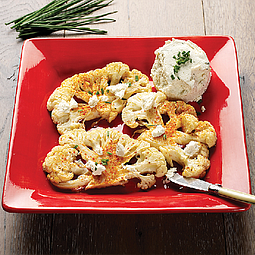Selecting the Right Potting Mix for Your Plantings
March 27, 2024 at 7:16 p.m.
As gardeners, it seems we are all looking for an ideal potting mix for our houseplants and containers. As with any gardening endeavor, a lot depends on what is available, the plants you are growing, and the type of maintenance you provide.
That said, there are some things you can do to increase your success and reduce ongoing maintenance. It all starts by reviewing the label on the bag you plan to purchase. You’ll find a variety of bags labeled as planting mix, potting mix, container mix, and more. Check the label to see what the bag contains and recommendations for its use.
These mixes usually contain inorganic and organic materials and may also include sand and mineral soil. They may or may not be sterilized to kill weed seeds and pests. If it doesn’t say sterilized, it probably is not, and you should consider another product instead.
Many potting mixes are labeled as “soilless.” They consist of peat moss, sphagnum moss, and compost for moisture retention and vermiculite or perlite for drainage but do not contain mineral soils such as sand or clay. They are lightweight and blended to hold moisture while draining well.
Some potting mixes are modified to accommodate the needs of certain plants. Orchid mixes often contain more bark for better aeration while cacti and succulent mixes have more sand or perlite for better drainage. African Violet potting mix contains more organic matter to create a moist, rich growing medium.
Organic potting mixes are also available. Many gardeners prefer to know the ingredients are free of pesticides and other contaminants. Check for the word organic and OMRI on the label if you want an organic product.
Once again, check the label on the bag for more details on the potting mix. Some potting mixes contain a “starter charge” of fertilizer. This minimal amount of fertilizer is usually gone after two or three waterings. Some include additional fertilizer that provides small amounts of nutrients over a longer period. The label may say controlled-release, time-release, or slow-release fertilizer, meaning it provides your plants with nutrients for a certain amount of time.
Moisture retaining products are supposed to hold water near plant roots and reduce the frequency of watering. Research has not shown them to be effective. Some gardeners feel they are effective while others end up with root rot when using these.
Consider adding an organic product, like Wild Valley Farms wool pellets (wildvalleyfarms.com) to potting mixes that do not contain moisture-retaining products. It is sustainable, made from wool waste, University-tested, and has been shown to reduce watering by up to twenty percent, while also increasing air space and adding organic matter.
Select bags of potting mix that are light, fluffy, and moist. Avoid bags that are waterlogged and heavy. The mix can break down and become compacted and some of the slow-release fertilizer may be pre-released and damage young seedlings when saturated with water.
Spend a bit of time searching for the potting mix that best matches the plants you are growing and your watering regime. The time spent selecting your perfect potting mix will pay off with greater growing success.
Melinda Myers has written more than 20 gardening books, including the recently released Midwest Gardener’s Handbook, 2nd Edition and Small Space Gardening. She hosts The Great Courses “How to Grow Anything” instant video and DVD series and the nationally syndicated Melinda’s Garden Moment radio program. Myers is a columnist and contributing editor for Birds & Blooms magazine and was commissioned by Wild Valley Farms for her expertise to write this article. Myers’ website is www.MelindaMyers.com.





